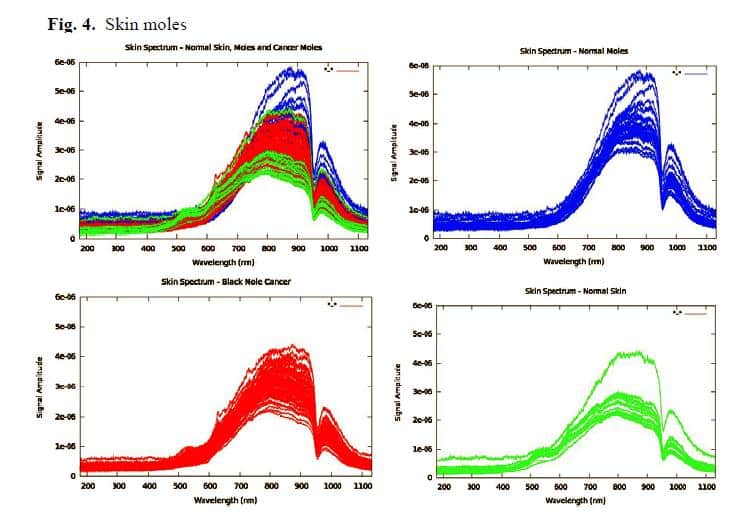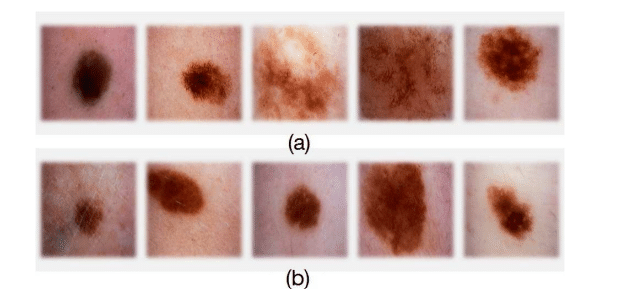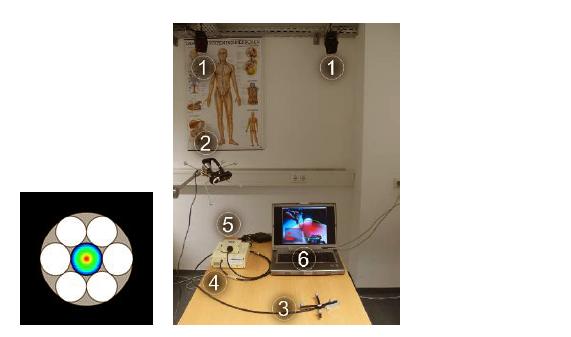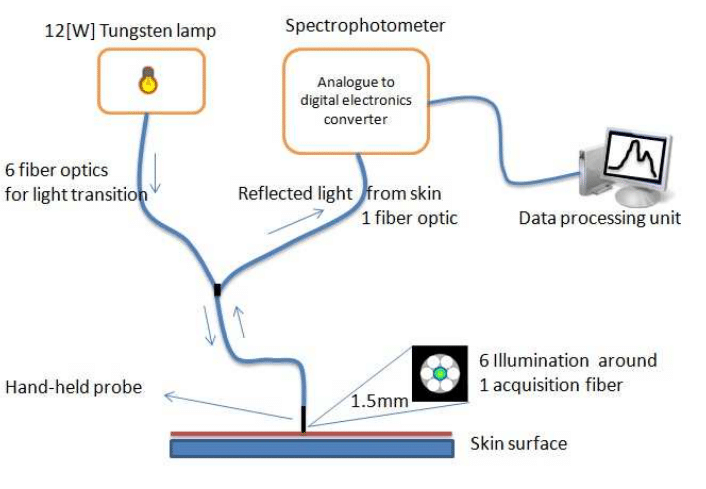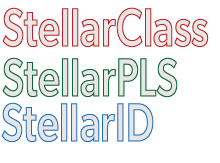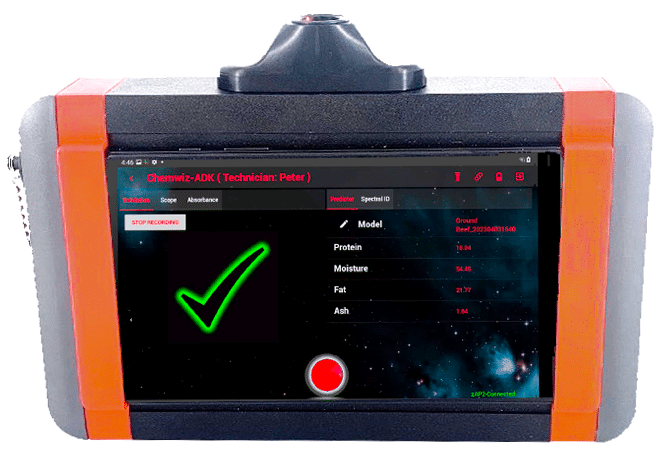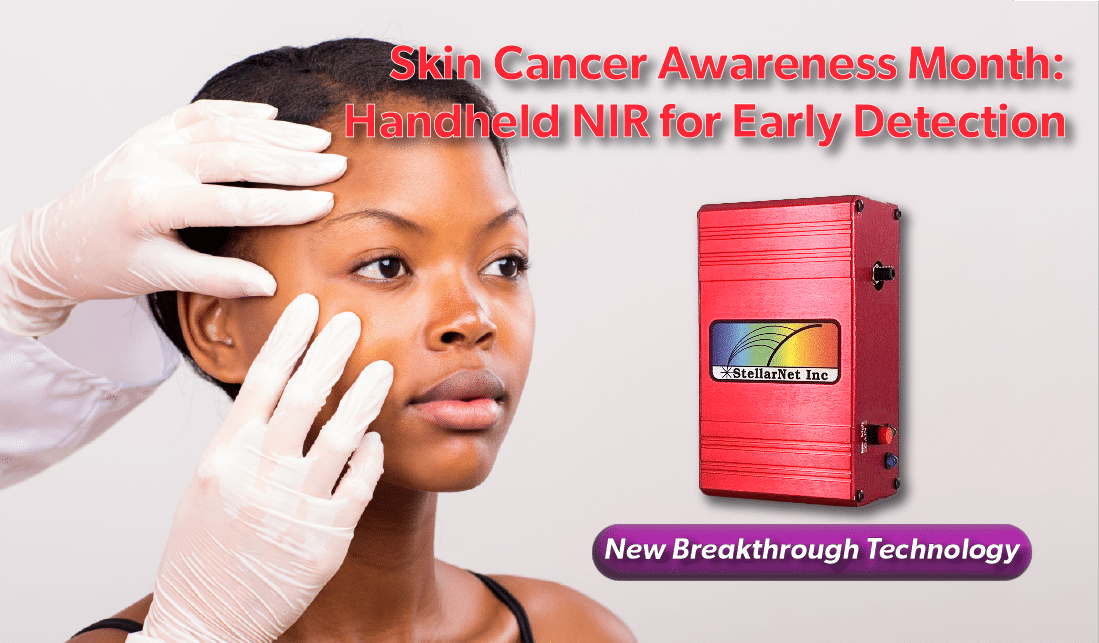
With an estimated 5 million new cases of skin cancer diagnosed each year in the United States, the StellarNet Team decided to spotlight a common, yet preventable cancer. This May is Skin Cancer Awareness Month and we hope this article helps you focus on prevention as well as learn how our new handheld NIR technology can be used for early detection of skin cancer. First, prevention is key, follow the Daily Sun Protection Guide from skincancer.org
Detection at your Dermatologist
Suspicious lesions are usually identified by dermatologists using a dermascope, a handheld optical magnifier, and are subsequently diagnosed based on pathological analysis of biopsied tissue. This process, however, is invasive, costly, time-consuming, and dependent upon the skill of the physician.
NIR Spectroscopy for Skin Cancer Detection
Near-infrared spectroscopy is used in skin cancer research to identify changes in the molecular composition of skin cells and tissues, which can provide valuable information about the progression of skin cancer. The technique uses near-infrared radiation to measure the vibrational energy of molecules, allowing researchers to identify specific molecular groups and their concentrations in a tissue sample. By analyzing the infrared spectra of different types of skin cells and tissues, researchers can identify characteristic spectral patterns associated with varying stages of skin cancer. Spectroscopy can potentially improve skin cancer diagnosis and treatment by providing rapid, non-invasive, and accurate diagnostic tools for skin cancer. With further development, these techniques may be used in clinical settings to aid in the early detection and treatment of skin cancer.
NIR for Skin Lesion Classification
Researchers at the Technical University of Munich and several others have used NIR spectroscopy and a multi-spectral classification scheme to assist dermatologists in the diagnosis of normal, benign, and malign skin lesions1. They were able to show successful classification (94.9%) of skin lesions from regular skin in 48 patients based on 436 measurements. Acquisition of spectroscopic data causes little or no patient discomfort, does not alter the basic physiology of the skin, poses no hazard to the patient, and does not interfere with any other standard clinical diagnostic practices. A non-specialist could perform the scan and therefore might be a useful tool for the prescreening of skin lesions. The researchers have used our modular NIR spectrometer, the DWARF-Star, as well as SL1 halogen lamp, and R600 reflectance probe.
New Handheld NIR with Built-in Classification Software
“The StellarNet Team continues to add features to our handheld NIR spectrometer system, the ChemWiz-ADK, and the newest feature is classification prediction, which could provide a breakthrough in commercialization of skin cancer detection research,” says StellarNet President, Jason Pierce. “The ChemWiz-ADK stands for Analyzer Development Kit and it’s just that, a handheld NIR spectrometer with a ton of built-in tools for developing your own analyzer. It has many application capabilities from agriculture to oncology. Our goal is to provide the hardware and software tools for other companies to commercialize further and provide their own expertise, calibration, and value-add. We now offer StellarID, StellarPLS, and now StellarClass which are all software prediction packages that come with the unit and are so easy to use that just about any person can develop their own application quickly.
For the early detection of cancer, saved spectral data could be classified into three groups: normal, benign, and malignant skin lesions. This would allow users to predict using a similar algorithm which type of lesion is being analyzed. There is also a built-in technician mode that simplifies the interface so it can be used in a clinical, production, or inspection application. We can customize the software package with your company logo and provide additional features or algorithms upon request.”
The ChemWiz-ADK Handheld NIR spectrometer system has a built-in halogen lamp and reflectance fixture. You can also attach fiber optic probes for reflectance.
We wish everyone a Happy and Safe Skin Cancer Awareness Month. Prevention is key!
References
Other Applications for ChemWiz-ADK StellarClass Classification

Classification of Fruit Ripeness
Fruit ripeness indicators such as firmness, total soluble solids (TSS), and titratable acidity (TA) could be developed for individual fruit types using our StellarPLS software. It is even detailed that a fruit ripening index can be correlated to NIR reflectance spectroscopy4. The StellarClass software could simplify all the cumbersome metrics and indicators and simply allow for the classification of ripe or not ripe. Each ChemWiz-ADK could be adapted to your current operation and fruit under test. By using your current methods a supervisor could train the NIR system to identify as if they were always doing the analysis and easily pass the instrument to a technician to continue analyzing fruit objectively.

Classification of Meat Quality
The ChemWiz-ADK handheld NIR spectrometer in combination with StellarClass prediction could be trained to test the quality of meats. Already, StellarNet offers the ChemWiz-ADK-M which has starter PLS calibration models for ground beef, turkey, and pork. Partial Least Squares (PLS) can provide chemical composition (crude protein, intramuscular fat, moisture/dry matter, ash). Other components and parameters cited to have been predicted using the same method are gross energy, myoglobin, and collagen, pH value; L*, a*, b* color values; water holding capacity; and slice shear force and even sensory attributes (color, shape, marbling, odor, flavor, juiciness, tenderness or firmness. The StellarClass NIR classification would allow the user to simplify things and measure meat quality grades. The ChemWiz-ADK with classification would allow a technician to simply press analyze and receive a grade quality score for the meat product – without the cumbersome development.

Classification of Raisins
The ChemWiz-ADK handheld NIR spectrometer in combination with StellarClass prediction could be trained to test the origin of certain types of raisins. Researchers at Xinjiang University in China have been able to successfully use NIR spectroscopy in combination with classification algorithms to test Hongxiangfei, Manaiti, Munage raisins against other adulterated raisins with 100% accuracy2. Raisin classification is a prediction of quality and could be used by many growers, wholesale grocers, and import/export companies to guarantee product quality quickly, non-destructively, and without the need for a laboratory.

Classification of Coffee Bean Region
Samples of green coffee beans produced in seven locations—Cuba, Ethiopia, Indonesia (Bari, Java, and Sumatra), Tanzania, and Yemen—were analyzed by researchers in Japan proving a 73% correct classification rate using NIRS3.
2. Guo, J., Chen, C., Chen, C. et al. Near-infrared spectroscopy combined with pattern recognition algorithms to quickly classify raisins. Sci Rep 12, 7928 (2022). https://doi.org/10.1038/s41598-022-12001-1
3. Okubo, N.; Kurata, Y. Nondestructive Classification Analysis of Green Coffee Beans by Using Near-Infrared Spectroscopy. Foods 2019, 8, 82. https://doi.org/10.3390/foods8020082
4. Parika Rungpichayapichet, Busarakorn Mahayothee, Marcus Nagle, Pramote Khuwijitjaru, Joachim Müller, Robust NIRS models for non-destructive prediction of postharvest fruit ripeness and quality in mango, Postharvest Biology and Technology, Volume 111, 2016, ISSN 0925-5214,
https://doi.org/10.1016/j.postharvbio.2015.07.006.

